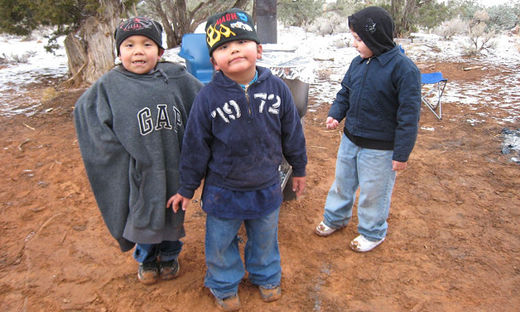
A rare disorder, characterized by some authorities as genetic, has abruptly surfaced on the sprawling Navajo Reservation in the Southwest – now officially known as the Navajo Nation. The very uncommon disease is Xeroderma Pigmentosum or XP. It is an extremely rare illness, affecting some populations more than others, with a much higher incidence among the Navajo population than in the U.S. as a whole.
To give some perspective, the incidence is one in a million in the wider population, but on the Navajo Reservation it is an incredible one in 30,000. Further, it appears to afflict only Navajo children.
The Navajo Nation is a semi-autonomous Native American-governed territory covering 27,425 square miles, the largest in the U.S.
The very first this journalist had heard of the disease was upon being asked to be a panelist to discuss XP with other Natives and others at Nashville’s David Lipscomb University, for a showing of the documentary film “Sun Kissed” on the disorder. The film had its world premiere at the Los Angeles Film Festival last summer.
The documentary was made at the request of a Navajo family who lost both their children, a son and a daughter, to the dreaded disorder. They hoped that the documentary would help to raise awareness on the Reservation and aid other families with undiagnosed or misdiagnosed XP children to come forward and create a community of informed XP families.
There were Navajos on the panel and in the audience. Like this writer, they had not heard of the disorder before being invited to the panel discussion. This gives an idea of the suddenness of this illness.
XP is a horrific affliction as illustrated by the documentary “Sun Kissed.” XP causes extreme sensitivity to sunlight. In children it leads to the early onset of devastating skin cancer and even blindness. Children who contract XP also experience fatal neurological degeneration. They rarely live past 20 years of age. XP leaves the afflicted children unable to care for themselves even minimally, with not even the ability to talk. The children depicted in the film had to be moved around in wheelchairs.
The film attempted to connect the devastating disorder to the “Long Walk” of 1864, when a majority of the tribe were driven by the U.S. Army from their homeland to stockades (concentration camps) at Bosque Redondo, New Mexico (the Navajo version of the Trail Of Tears). By many accounts, the Navajos were reduced in population from 25,000 to 5,000 in a few years before being allowed to return to their homeland. Geneticists contend that the numerical reduction of the Navajo people coupled with genetic isolation fostered susceptibility to increased genetic disorders, such as XP.
Navajos present at the film showing tended to disagree with the hypothesis of genetic disorder. And the geneticist on the panel was not aware of uranium contamination, the result of mining on the Navajo Nation.
The explosion of this horrific disease has as a backdrop decades of uranium contamination on the Navajo Nation, via the Cold War and the Manhattan Project. The reservation covers large portions of Arizona, New Mexico and Utah, with uranium deposits throughout much of the area. At one time more than 1,000 mines were in operation on Navajo lands. With unemployment being astronomical , as on most reservations, countless numbers of Navajos worked the mines. In the latter 20th century millions of tons of uranium were extracted from the earth there. Lung cancer ravaged Navajo miners at much higher rates than the non-Indian population, and other lung diseases resulted from the breathing of radon. These hapless workers were never warned of the danger of uranium exposure by the U.S. government or by the private companies contracted to work the mines.
In Judy Pasternak’s recent book “Yellow Dirt: A Poisoned Land and the Betrayal of the Navajos,” she explains that “from the 1940’s to the early 21st century the U.S. knowingly used and discarded an entire tribe for the sake of atomic bombs.” Uranium, the yellow dirt, “has ended up in Navajo drinking supplies, in their walls, in their playgrounds, in their bread ovens, in their churches and even in their garbage dumps and they are still dying.”
At the conclusion of the panel discussion there seemed to be a general feeling that there should be no “rush to judgment” as to the cause of XP but that more answers needed to be considered for the sudden rise of the dreaded illness.
Photo: Neeta Lind/Flickr










